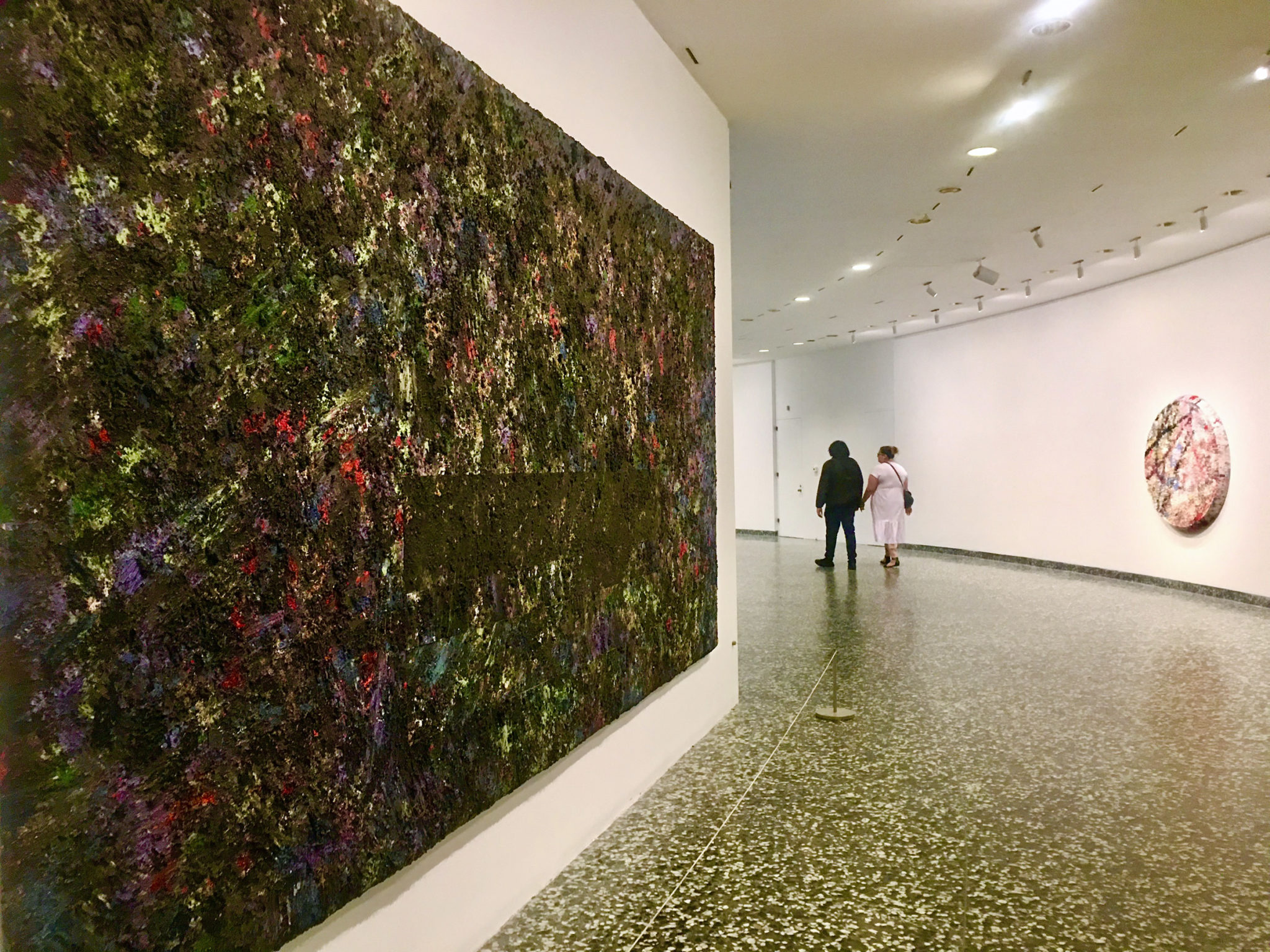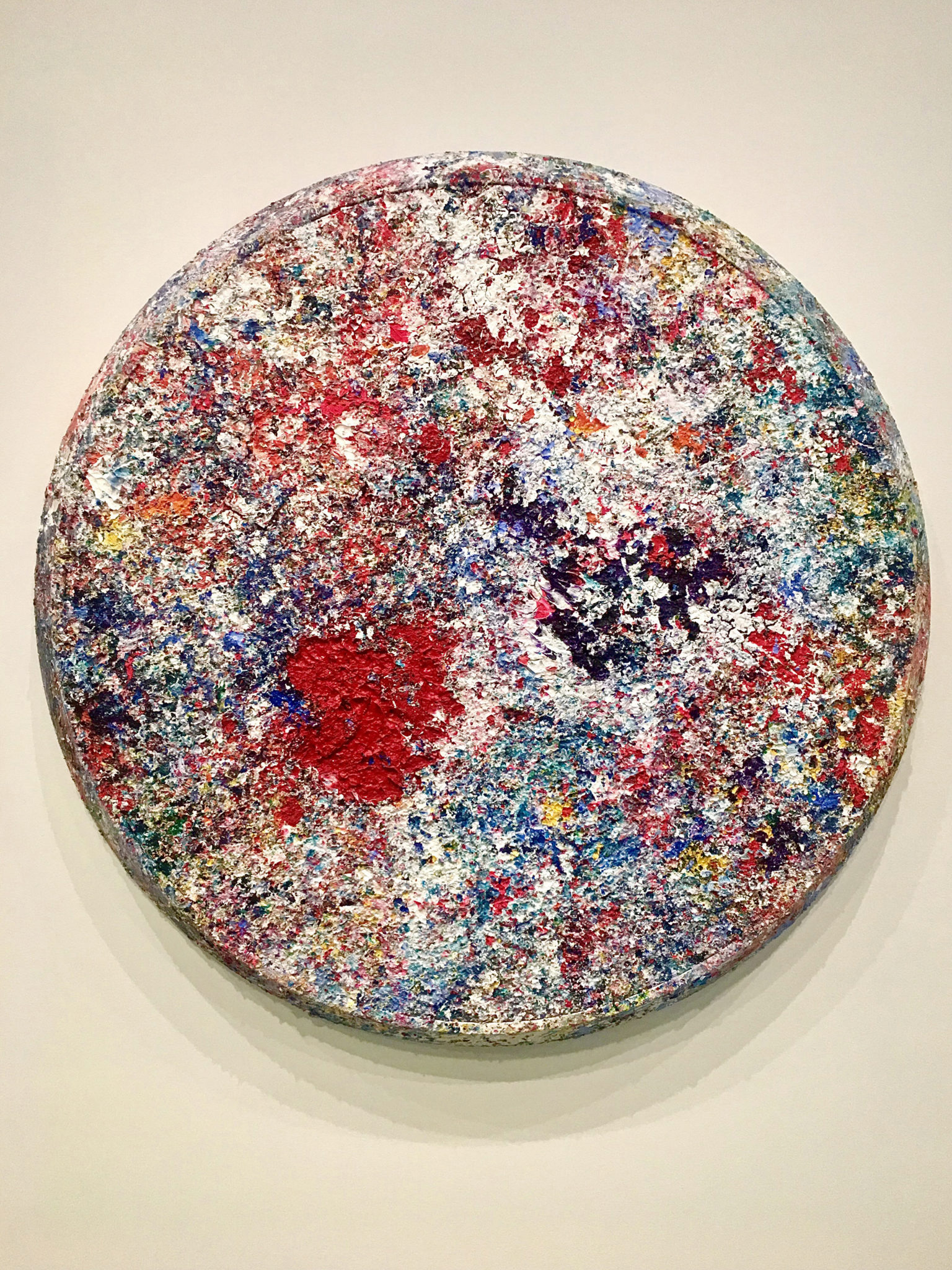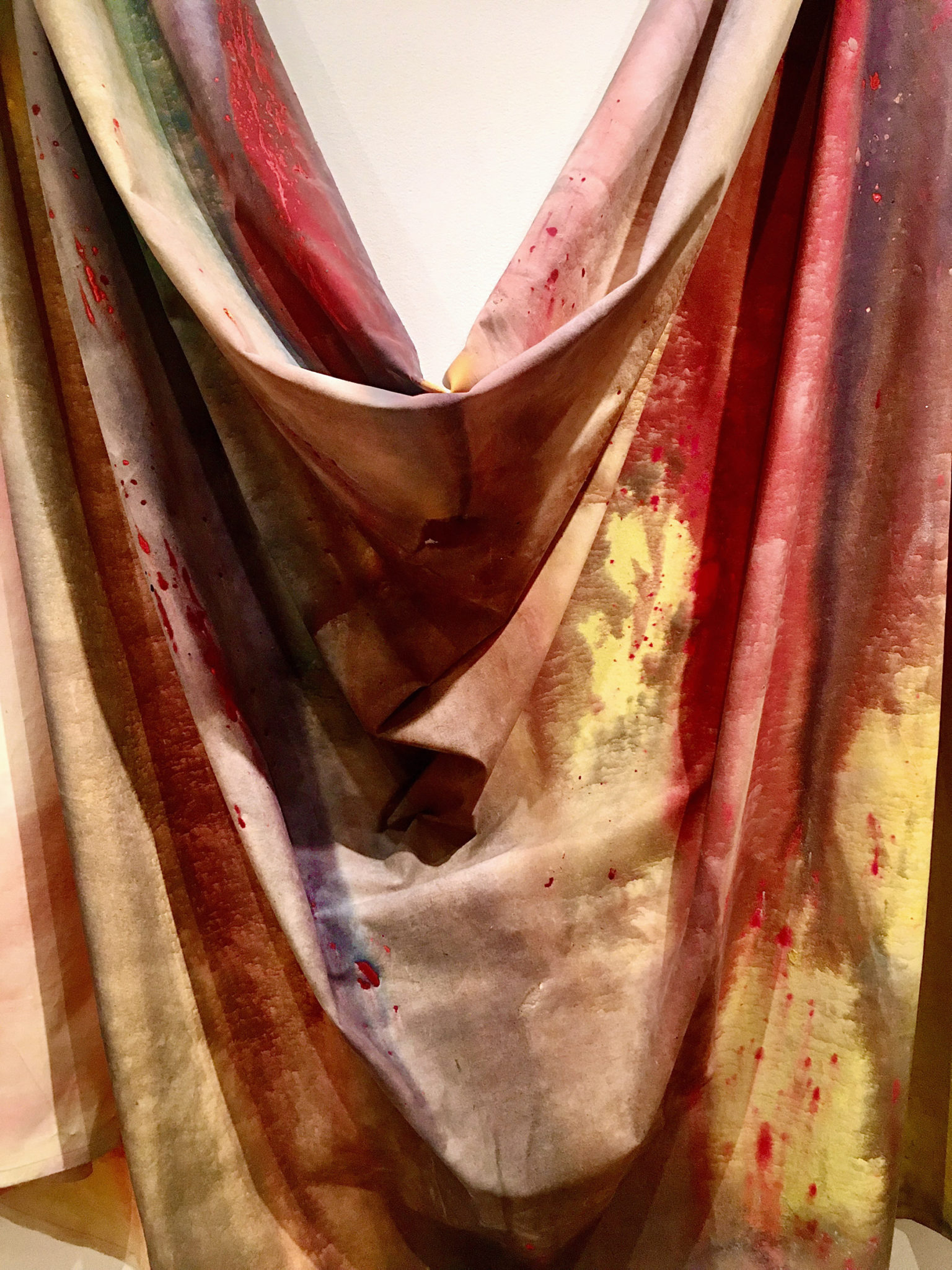Coming Full Circle In Life and Art: A Farewell to Sam Gilliam

Alexandria, VA – A new exhibit on the second floor of the Hirshhorn Museum and Sculpture Garden on the National Mall opened Memorial Day weekend, kicking off the summer art season with the first DC celebration of hometown art giant Sam Gilliam since 2007. On May 25, the museum debuted “Sam Gilliam: Full Circle,” a series of circular paintings he called tondos and his first solo exhibit at the Hirshhorn.
There are 17 tondos on display throughout the Hirshhorn’s exhibit. Tondo is from the Italian word meaning round. The circular format was popular during the Renaissance as Michelangelo and Botticelli were partial to using medallion shapes for religious iconography and tomb walls.

The minimalistic installation of sublime round tondo acrylic and mixed-media canvases along the inner circular wall is totally zen, meditative, peaceful. Almost ecclesiastical in the predominance of blinding white on the expanse of blank wall space and the beveled framing employed on several of the canvases. It evokes the sense of Barnett Newman’s abstract black and white (with a soupçon of red) Stations of the Cross across the Mall at the National Gallery of Art’s East Wing tower space. It also calls to mind experiencing Louise Nevelson’s Chapel of the Good Shepherd “sanctuary of stillness,” a completely white, wooden sculptural installation in the chapel of the Citigroup Center in New York.
Gilliam is best known for his drape paintings which shaped colorful canvas into three-dimensional expressions of powerful movement. Gilliam’s process was to stain and fold unprimed, unpainted canvas suspended from the wall in a freeform drapery fashion, effecting fusions of bleeding color. For the artist, the interaction of form and immersive color represented the tensions of the times amid the turmoil of the 1968 civil rights movement and Vietnam War protests.

Gilliam belonged to the Washington Color School, an influential movement during the 1950-1970s that altered and dominated art aesthetics around the DMV and the abstract expressionist world. Being the youngest of the famous color-field painters who put the Washington art scene squarely on the art-elite map, Gilliam eschewed associations with the more-senior founders Kenneth Noland, Morris Louis, Gene Davis, Thomas Downing, Howard Mehring, and Paul Reed.
Gilliam stood out not only for his sculptural approach to abstraction on painted canvas but also for his political expression as an African American man during times of great political and cultural unrest and awakening. Unlike Russian Constructivism protest art and the more literal visual commentary extolled by other contemporary abstract expressionists, Gilliam skirted embedded messaging and literal text in his compositions, preferring to adhere to the unwavering principles of the Color School movement. Expression of color ruled the school above all else.
Gilliam once explained, “The expressive act of making a mark and hanging it in space is always political. My work is as political as it is formal.” Formal isn’t a word I would ever use to describe Gilliam’s drapes or tondos. Lyrical. Sensuous. Evocative. Provocative. Ethereal. Plaintive. Passionate. Yes! Rail, the Gilliam masterpiece in the Hirshhorn permanent collection, which might be construed as formal since it’s of a large, rectangular, flat-stretched canvas, welcomes visitors at the entrance to the Full Circle exhibit.

Rail is a stunning work. The linear context of the name within the content of the abstraction, where Gilliam inserts an almost imperceptible, hidden, elongated, floating shape, is juxtaposed as a counterpoint to the circular flow of the exhibition. Given the rail metaphor, the viewer is reminded of the Underground Railroad and the eponymous white-gloved African American Pullman porter of the railroad lines that carried this country from one sea to the other, the labors and toil of men and women to and from work, even a child’s toy train goes round and round.

Sam Gilliam, 89, died at home on June 25, surrounded by his family and his art, one month after his final solo show in the Capital City he loved. Artist, writer, educator, activist, and jazz aficionado—the quintessential Renaissance man left us with his final aesthetic statement, appropriately inspired by 15th-century masters expressing the art de rigeur of their own time. Sam lived fully, achieving immortality beyond fame and fortune and coming full circle to board that last train to a place called home. Good journey, Sam.
“Sam Gilliam: Full Circle” is on exhibit at the Hirshhorn Museum and Sculpture Garden until September 11.
NOTE: The Phillips Collection has a wonderful retrospective Sam Gilliam tribute exhibit online.
ICYMI: The National Botanic Garden Opens to the Public!




